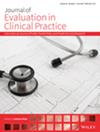Evaluation of Future Nurses' Beliefs and Fears About Pain: A Descriptive and Correlational Study
Abstract
Background
How nurses manage pain and their decisions to treat it depend on their attitudes, beliefs, and misconceptions about pain. Therefore, the first step to promoting positive behaviour change in nurses is to determine their attitudes, beliefs, fears, knowledge, and behaviour towards pain management. Nurses with negative or false beliefs about pain are likely to provide inadequate pain management and care. Nursing students are the nurses of tomorrow who will play a key role in pain management and treatment. This study aimed to evaluate nursing students' beliefs and fears about pain.
Methods
This descriptive and correlational study was carried out on 342 nursing students of a university in Türkiye. Data were collected using an individual information form, the Fear of Pain Questionnaire-III (FPQ-III), and the Pain Beliefs Questionnaire (PBQ).
Results
The mean scores of the participants from FPQ-III, Severe Pain, Minor Pain, Medical Pain subscales were 83.71 ± 19.14, 32.54 ± 7.97, 24.48 ± 6.89 and 26.68 ± 7.92, respectively. The participants' mean scores on the Organic Beliefs and Psychological Beliefs subscales were 3.50 ± 0.72 and 4.60 ± 0.96, respectively. There was a positive correlation between FPQ-III and PBQ scores. The psychological belief subscale explained only 2.1% of the total change in the fear of pain score (R2 = 0.021, p < 0.05).
Conclusion
Participants had high ‘psychological beliefs’ and ‘severe pain’ scores. It may be recommended to use interactive education methods such as case-based teaching for students to learn effective methods of coping with pain and realise their own beliefs and attitudes. Establishing simulation laboratories where students can experience all pain-related processes is also important in gaining knowledge and skills on pain management.

 求助内容:
求助内容: 应助结果提醒方式:
应助结果提醒方式:


